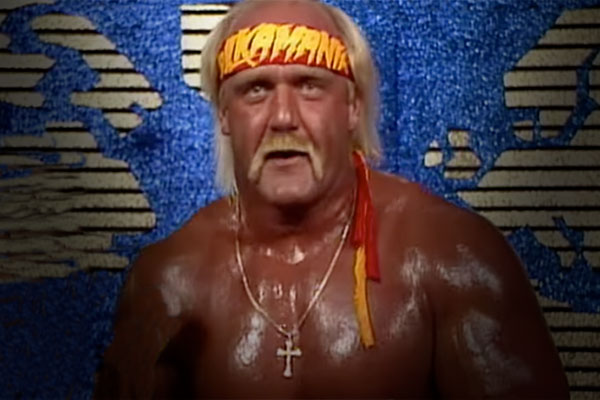
Iconic 80s wrestling superstar, Terry “Hulk Hogan” Bollea – Dead at 71
Hulk Hogan Death – Heart Attack
1953-2025 (Age 71)
The death of Hulk Hogan would rock the world. The iconic 80s wrestling superstar redefined wrestling and pop culture. Whether he was working to capacity crowds in wrestling arenas or making TV or film appearances, Hulk Hogan defined the word icon. Indeed, the death of Hulk Hogan will likely lead to even further recognition as historians and fans reexamine his career.
Early Years
Terry Bollea would enter the world on August 11, 1953. He enjoyed playing baseball, and later bass guitar, joining a band that would indirectly lead to his pro wrestling career.
Hogan played in the band Ruckus at a bar frequented by wrestlers. Given his incredible size, it’s no surprise that he caught the attention of wrestlers, including Jack Brisco.
Hogan decided to train with regional star Hiro Matsuda. While the story of what happened varies, Matsuda broke or severely injured one of Hogan’s legs. In one tale, Hogan decided to test Matsuda while in another, Matsuda wanted to test Hogan’s willingness to stick with training.
Undeterred, Hogan returned to training with Matsuda, eventually finding work in Eddie Graham’s Championship Wrestling from Florida. Hogan worked under a mask as the Super Destroyer but found himself languishing on the roster.
Walking Away from the Ring
Wrestling would not work out the way Bollea expected, leading to him deciding to step away from the ring. In his memoir, My Life Outside the Ring, Hogan talks about his time working in the Kansas City promotion and hating it. He’d already dealt with a lackluster run in Florida and was flat out done:
That was that. No offense to Kansas City, but I wasn’t about to be banished off to Hicksville. And I sure wasn’t going to sit there and be humiliated any more than I already had been for the last year and a half. So that was the end. Three, four months into my professional wrestling career, I walked away. I was done.
As fans know, Hogan didn’t retire. Nevertheless, Hulk Hogan’s death as a wrestler nearly happened. Thankfully, Hogan contacted wrestler “Superstar” Billy Graham:
Bollea had befriended “Superstar” Billy Graham, and he gave him a call to see if he could get booked outside Tampa. Graham sent him to Southeastern Championship Wrestling (SECW) and their booker, a French-Canadian named Louie Tillet. The territory covered northern Florida, southern Alabama, and eastern Tennessee. There, Tillet renamed him Terry “The Hulk” Boulder.
Things began to change and the Southeastern promoter saw a diamond in the rough. Boulder clashed with Andre the Giant in a memorable arm-wrestling match that led to an in-ring match. Interestingly, both men had battled each other in battle royals in Championship Wrestling from Florida when Hogan worked there as the Super Destroyer.
Boulder’s star would slowly rise, with SECW turning him babyface. The big man would challenge NWA World Heavyweight Champion Harley Race, coming up short for the title but looking good in the process.
Traveling from one territory to another was common for aspiring wrestlers. This allowed promoters to keep its cards fresh with new match-ups and it gave aspiring talents an opportunity to work against new opponents. Boulder would work in Georgia Championship Wrestling as Sterling Golden.
There, he would clash with Andre the Giant again. It was rare for Andre to find similarly-sized opponents like Hogan and promoters saw money in the feud.
His Guardian Angel
Former NWA World Heavyweight Champion Jack Brisco would prove to be Bollea’s guardian angel. Not only did Brisco help break Bollea into wrestling, but he put in a good word for him with World Wrestling Federation kingpin Vince McMahon Sr.
There was no doubt Bollea had hit the big time. Although the wrestling world was split up into many regional promotions, the WWF was one of the biggest and a prestige promotion. McMahon would rename Bollea Hulk Hogan.
Wrestling lore has it that McMahon wanted Hogan to dye his hair red, supposedly to play him up as an Irish style babyface. As Hogan tells it, he balked, not wanting to lose any more of his thinning hair. Like many wrestling anecdotes, it’s a good story, regardless of how much is based on fact.
Bright Lights Big City
Now allied with heel manager “Classy” Freddie Blassie, Hogan dispatched mid-card opponents at house shows and destroyed jobbers in TV matches. In 1979, pro wrestling’s business model revolved around house shows as there were no pay-per-view revenue. Hogan continued polishing his wrestling skills in the ring and on the microphone. He still had much to learn but his size, charisma, and look hid his shortcomings.
Eventually, WWF booked Hogan against WWF Champion Bob Backlund. Hogan didn’t beat the champion but his matches with Backlund continued his journey to stardom. Hogan also worked a high-profile feud with Andre the Giant.
This led to confrontations on TV and the two big men’s first high-profile match at 1980’s Showdown at Shea supercard. There, Andre defeated Hogan. The match was known for several memorable spots including Hogan slamming the Giant and Hulk laying Andre out after the match with a loaded elbow pad.
Hogan proved a draw and Vince McMahon was never at a loss for opponents to challenge him. Strong man Tony Atlas had a memorable series with Hogan, with Atlas getting several victories over Hulk.
Things were going well for Hogan but a new opportunity led to him making a bold career choice—leaving WWF to pursue a movie role.
The Birth of Hulkamania
Hulk Hogan’s role in Rocky III as wrestler Thunderlips cannot be overstated. When Sylvester Stallone called Hogan in to play the role of a wrestler facing Stallone’s boxing character Rocky Balboa, Hogan was getting national exposure. It came at a serious cost. Supposedly, Vince McMahon Sr. told Hogan he could stay in WWF or go to Hollywood. For Hogan, the choice was easy.
Now gone from the WWF, Hogan entered Verne Gagne’s American Wrestling Association (AWA), again working as a heel. However, Hogan’s popularity had grown thanks to his Thunderlips role and fans didn’t want to boo him. Promoter Verne Gagne wisely turned Hogan babyface, leading to the development of Hulkamania.
While Vince McMahon Jr. would take Hulkamania to new heights, there is no denying that Hulkamania was running wild in the AWA. Hogan’s popularity led to major ticket sales and a run in Antonio Inoki’s New Japan Pro Wrestling. There, Hogan achieved further fame and earned the nickname “Ichiban” (number one).
As good as Hogan’s AWA run was, promoter Verne Gagne refused to put the AWA World Heavyweight Championship on Hogan. Hogan would face AWA World Champion Nick Bockwinkel many times, only for the champion to escape with his title, frustrating fans. Even worse, Gagne booked fluky finishes where Hogan appeared to win, only for AWA officials to reverse the decision.
Returning to the WWF
Hogan’s growing frustration with Verne Gagne opened the door for a seismic shift in the wrestling world. Vince McMahon Sr.’s son Vincent Kennedy McMahon (aka Vince Jr.) had bought the WWF from his father and the younger McMahon had major aspirations for the WWF.
This would include a bold national expansion led by a new style champion. Vince Jr. would replace longtime WWF Champion Bob Backlund with a flashier, more marketable champion. Iranian wrestler the Iron Sheik would dethrone Backlund, with Hulk Hogan returning to the WWF to beat the Iron Sheik for the title.
Hogan’s run in the WWF changed everything for the promotion. McMahon rebuilt the WWF with top talent from around the wrestling world, with Hogan the focus of the promotion. Hogan would battle various heels including “Rowdy” Roddy Piper, Paul “Mr. Wonderful” Orndorff, “Big” John Studd, the Magnificent Muraco, and many others.
Success After Success
Hulkamania reached greater heights in the WWF, with McMahon piggybacking Hogan onto the success from the mainstream media success of The Fabulous Moolah vs Wendi Richter. Cyndi Lauper’s role as Richter’s manager birthed “The Rock-n-Wrestling Connection,” giving the WWF a mainstream audience thanks to exposure on MTV.
Hogan then defended Lauper’s honor by battling “Rowdy” Roddy Piper on a subsequent MTV special, “The War to Settle the Score.” This in turn led to WWF’s closed-circuit spectacular WrestleMania. There, Hogan teamed with TV star Mr. T to defeat Roddy Piper and Paul Orndorff.
From that point on there seemed to be no end to Hogan’s success. The Hulkster provided the catalyst the WWF needed to go national. This fueled further expansion including the WWF airing its late-night Saturday Night’s Main Event special on NBC and subsequent WrestleManias.
While it would be wrong to ignore the many supporting players in the WWF, Hogan was the promotion’s number one hero and he spearheaded its expansion. Hogan also brought in new fans by appearing on TV shows such as Saturday Night Live and The A-Team.
Monsters and Backstabbers
In wrestling, Hogan’s popularity was fueled by a successful formula of him battling monster heels and friends-turned-foe. Hogan would fight off challenges from monsters including “Big” John Studd, “King Kong” Bundy, Kamala, and others.
He also fought former friend Paul “Mr. Wonderful” Orndorff before facing the biggest challenge of his career—Andre the Giant. The gentle giant had turned into a menacing monster after heel manager Bobby “The Brain” Heenan convinced Andre that Hogan had ducked him for years as champion, forcing Andre to turn heel to get a shot at the WWF Championship.
The Hogan vs Andre feud led to an epic confrontation at WrestleMania III and the feud continued into the next year, stopping at the inaugural Survivor Series in 1987 before Hogan dropped the title to Andre at 1988’s The Main Event prime-time special. Andre won the belt with the help of a crooked referee bankrolled by fellow heel “The Million Dollar Man” Ted DiBiase.
Hogan’s feud with Andre led to another showdown at WrestleMania IV where they competed in a tournament to crown a new WWF Champion. It continued at 1988’s SummerSlam where Hogan teamed with new WWF Champion Randy “Macho Man” Savage to defeat Andre and Ted DiBiase.
The Mega Powers Explode
As often happened in Hogan’s career, friends’ storyline jealousy led to them turning on Hogan. Savage proved no different, leading to the highly-acclaimed storyline where “The Mega Powers Explode.” Hogan defeated Savage at WrestleMania V, regaining the WWF Championship.
Hogan’s WWF career led to a new wrinkle when Vince McMahon decided to put the WWF title on a new champion—The Ultimate Warrior. McMahon reportedly wanted the Warrior to take the WWF to even greater heights while Hogan worked as “The Babe Ruth” of the WWF. While Warrior defeated Hogan in an extremely rare babyface vs babyface match at WrestleMania VI, Warrior’s title reign wasn’t the extravaganza McMahon had hoped for.
A New Era
By 1991, the wrestling boom was beginning to slow down. Nonetheless, Vince McMahon chose Hogan as the man to continue carrying the WWE banner. Hogan would defeat Sgt. Slaughter at WrestleMania VII, winning his third title.
A subsequent program with longtime NWA World Champion “Nature Boy” Ric Flair (who had recently left his longtime home in WCW) fizzled. However, WWF took things in a new direction with newcomer the Undertaker upsetting Hogan for the title at 1991’s Survivor Series.
Behind the scenes, WWF was facing a steroid scandal and this led to WWF focusing on smaller-sized wrestlers. Hogan took time off, continuing his attempts to break into Hollywood. Hogan later returned defeating WWF Champion Yokozuna at WrestleMania IX before dropping the title to him at King of the Ring.
A New Home
When WCW came calling, Hogan answered their call, signing a lucrative contract with the promotion that reportedly give him creative control, and a sizable cut of all pay-per-view profits. Hogan proved his worth early on when WCW threw him into a feud against Ric Flair.
WCW would not repeat the WWF’s mistake of leaving money on the table, turning this feud into one that crossed over two pay-per-views and an episode of Clash of the Champions. Although the feud was often lopsided in Hogan’s favor, it proved profitable and would be revisited several times.
Hulk Hogan’s WCW run featured him bringing in friends from WWF including Randy Savage, Jim Duggan,The Big Bossman, and The Honky Tonk Man. WCW booker Kevin Sullivan reused the WWF’s lucrative formula of pitting Hogan against monsters. In WCW, Sullivan created his faction The Dungeon of Doom, which consisted of former Hogan foes, including Kamala and Earthquake.
A Shocking Swerve
Ever canny to the changing nature of the business, Hulk Hogan turned heel in 1996, joining former WWF Superstars Scott Hall and Kevin Nash and forming the New World Order. Hogan’s switch shocked the wrestling world and supercharged his career as he defeated one WCW talent after another, maintaining an iron grip on the WCW World Championship. Hogan battled top WCW talents including Lex Luger, Sting, Ric Flair, as well as former WWF rivals including “Rowdy” Roddy Piper.
“Hollywood” Hogan’s WCW run eventually lost steam, but not before he dropped the title to Bill Goldberg, cementing Goldberg’s rise to the top of WCW. Hogan eventually returned to his red and yellow roots, working as a babyface until a falling out with WCW’s booking team. Hogan left WCW, never to return.
Renewed Glory
In 2002, Hogan returned to the WWF, rejoining his nWo teammates Scott Hall and Kevin Nash. “Hollywood” Hogan and his former WCW crew were ready to run roughshod on the WWF, but a funny thing happened on the way to WrestleMania XVIII.
Although Hogan was playing a heel, WWF fans had missed the Hulkster and began cheering him. When Hogan battled The Rock at WrestleMania XVIII, there was no denying Hogan’s popularity. Consequently, the WWF turned Hogan babyface. The Hulkster would even have a brief run as WWF Champion.
Hogan stayed in the WWF until a falling out with Vince McMahon. Hogan returned to the WWF, working against rising star Randy Orton and fellow babyface Shawn Michaels.
When IMPACT Wrestling decided to take a shot at the WWF, Hogan joined a small army of former WCW and WWF wrestlers signed by the promotion. While Hogan’s run didn’t feature him at his best, he was a featured player during his run in the company.
Later Challenges
The 21st century presented challenges to Hogan, some of his own making. Hogan left IMPACT, returning to the WWF. However, a scandal nearly destroyed his career. Hogan’s divorce with wife Linda proved costly.
His son Nick’s car crash and Hulk’s reaction to it raised some eyebrows. Nothing could compare to the scandal when a sex tape was released where Hogan used racist language, damaging his reputation. The WWE would cut ties with Hogan and kick him out of its Hall of Fame.
While Hogan was down, he wasn’t out and he slowly regrouped. The Hulkster embraced Christianity and apologized for his remarks. Eventually, WWE accepted Hogan back into its arms, with Hogan apologizing to the WWE locker room.
Hogan returned to WWE, making high-profile appearances such as co-hosting WrestleMania. Unfortunately, his wish to end his career wrestling in WWE would never be fulfilled.
Hogan Hulks Up for Real
In a scene that imitated Hogan’s greatest in-ring comebacks, the Hulkster successfully sued Gawker. The company eventually settled with him, helping Hogan get back on his feet.
2024 saw Hogan return to the spotlight, launching his own beer. He would also appearing at the Republican National Convention. There, Hogan would lend his support to Presidential candidate and WWE Hall of Famer, Donald Trump.
Hulk Hogan’s wrestling career impacted his body, forcing him to undergo many surgeries. Hulk’s use of the legdrop took its toll on his body. The Hulkster would reportedly go under the knife for neck and back surgeries. As we’ll see later, some would question whether a surgery led to the death of Hulk Hogan.
A Championship Career
With a career spanning five decades, Hulk Hogan’s accomplishments are too many to list here. Highlights include six WWF Championships, six WCW World Championships, and championships in New Japan Pro Wrestling.
The Hulkster would be inducted into the WWE Hall of Fame twice along with inductions into the Wrestling Observer Hall of Fame, the International Professional Wrestling Hall of Fame, and the Professional Wrestling Hall of Fame and Museum.
The Death of Hulk Hogan
Hulk Hogan continued promoting his business ventures. Unfortunately, his medical condition worsened. According to the Tampa Bay Times:
Hogan died July 24 at age 71 after collapsing at home in Clearwater Beach while he was “doing therapy,” according to first responders’ radio communications that morning. Firefighter paramedics who rushed Hogan to Morton Plant Hospital told staff there that Hogan had just returned home from the hospital after a surgery. Hogan was also, paramedics said, “currently waiting to start dialysis.”
Wrestlers and entertainment stars would take to social media to acknowledge Hulk Hogan’s death. Many would share stories of how Hogan influenced their lives.
Hulk Hogan is survived by his third wife, Sky, and his children, Brooke and Nick.
Florida Governor Ron DeSantis proclaimed August 1 as Hulk Hogan Day and ordered flags to be flown at half-mast.
On August 28, 2025, TMZ would report that Hogan’s widow Sky is planning to file a lawsuit in relation to Hulk Hogan’s death:
Hulk Hogan’s widow, Sky Daily, is “planning” to file a lawsuit against at least one of the WWE legend’s doctors and others for medical malpractice she says led to his death, sources with direct knowledge tell TMZ Sports. The suit, we’re told, would center around the neck operation Hulk underwent back in May
What are your favorite memories of Hulk Hogan? Let us know in the comments below.
Other wrestlers who died in the 2020s include Adrian Street, Bray Wyatt, Sid Vicious, and Virgil.

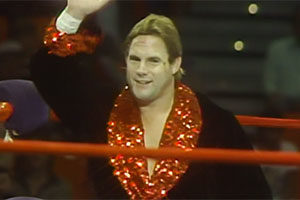
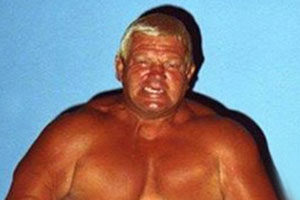
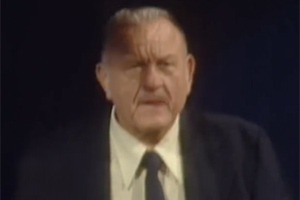
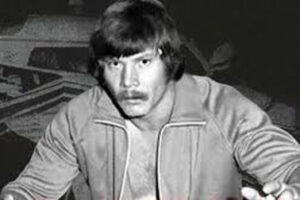
Hulk Hogans journey is incredible—his rise to stardom, the birth of Hulkamania, and his impact on wrestling are undeniable. Its fascinating to see how he shaped the WWF and connected with fans worldwide. His comebacks and feuds kept viewers on the edge of their seats. Truly a legend!
The story of Hulkamania will only get bigger as time goes by.
Good writeup. Sabu and Steve McMichael passed away this year too.
Yes. Many wrestlers passed away this year. Unfortunately, our main writer was sick for most of the year but now that they’re back, we hope to have more updates.